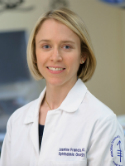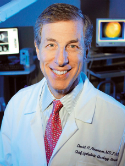Second primary neoplasms in retinoblastoma: Effect of gene and environment Book Section
| Authors: | Kleinerman, R. A.; Francis, J. H.; Abramson, D. H. |
| Editors: | Albert, D. M.; Miller, J. W.; Azar, D. T.; Young, L. H. |
| Article/Chapter Title: | Second primary neoplasms in retinoblastoma: Effect of gene and environment |
| Abstract: | Second nonocular cancers are the leading cause of morbidity and mortality in survivors of germinal retinoblastoma in the United States and other high-income countries. The RB1 gene is a high-risk cancer susceptibility gene, and with the loss of a functional RB protein and its tumor-suppressive function, these patients carry a risk for developing second nonocular tumors, which has been reviewed extensively. The most common second cancers are bone and soft tissue sarcomas and melanoma followed by a variety of epithelial cancers such as lung and breast. Most large studies of germinal retinoblastoma survivors with adequate long-term follow-up of at least 20 years have reported cumulative incidence rates of 0.5%-1% increase in second cancers per year. The cumulative risk of death from second nonocular tumors in germinal patients was 48% by age 70 or one out of every two patients compared with only 9% in non-germinal patients or only one in ten patients. A combination of several risk factors likely contributed to the increased risk of nonocular cancers including past treatment such as radiotherapy and/or chemotherapy, genetic factors possibly including the type and location of the RB1 germline mutation, and environmental factors such as excessive sun exposure and tobacco smoke. Current treatments for retinoblastoma include ophthalmic artery chemosurgery that may reduce the risk of second nonocular tumors, but long-term follow-up will be needed to confirm. A recent consensus report recommended screening guidelines for second nonocular tumors for adult survivors of retinoblastoma. © Springer Nature Switzerland AG 2022. |
| Keywords: | radiation; retinoblastoma; second non-ocular cancer |
| Book Title: | Albert and Jakobiec's Principles and Practice of Ophthalmology. 4th ed |
| ISBN: | 978-3-030-42633-0 |
| Publisher: | Springer |
| Publication Place: | Cham, Switzerland |
| Date Published: | 2022-01-01 |
| Start Page: | 7941 |
| End Page: | 7952 |
| Language: | English |
| DOI: | 10.1007/978-3-030-42634-7_266 |
| PROVIDER: | scopus |
| DOI/URL: | |
| Notes: | Book Chapter: 316, from the section "Ocular Oncology" -- Export Date: 1 June 2023 -- Source: Scopus |
Altmetric
Citation Impact
BMJ Impact Analytics
Related MSK Work




